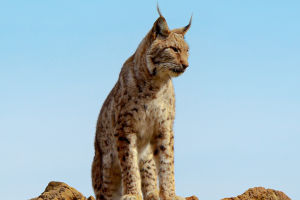If you’ve ever petted a cat along its back, you might have noticed them raising their hip into the air.
This quirky and endearing behavior leaves many cat owners curious about its meaning!
Is it a sign of affection, a reflex, or something deeper? Let’s explore the reasons behind this feline habit and what it reveals about their instincts, communication, and biology.
1. A Sign of Trust and Comfort
When a cat raises its hip during petting, it often indicates trust and relaxation. Cats are naturally cautious animals, and this posture shows they feel safe and at ease. By lifting their hindquarters, they’re inviting more interaction, signaling that they enjoy your attention.
2. Triggering a Reflex
This behavior is partly a result of a reflex known as the elevator hip response. Cats have sensitive nerve endings along their spine, especially near the base of the tail. When you pet this area, it stimulates these nerves, prompting the cat to arch its back and lift its rear. This response is instinctive and pleasurable for most cats.
3. Social Behavior in Cats
In the wild, cats use body language to communicate with one another. Raising their rear is a submissive and non-threatening gesture often observed during grooming or social bonding. By adopting this posture with humans, cats may be mimicking their natural interactions with fellow felines.
4. Scent Communication
Cats are territorial animals that rely heavily on scent to communicate. They have scent glands located near the base of their tail. When a cat lifts its hip, it might be exposing these glands, allowing your petting to spread their scent. This behavior helps reinforce their bond with you and marks you as part of their territory.
5. A Throwback to Kittenhood
For kittens, raising their rear is an instinctive behavior tied to grooming. Mother cats lick their kittens to keep them clean, and the young ones lift their hindquarters to facilitate this. Mature cats may retain this behavior as a sign of comfort and care when interacting with humans.
6. Mating Instincts
In some cases, raising the rear is linked to mating behavior, particularly in unspayed female cats. When in heat, a female cat may adopt this posture to signal receptiveness to a male. However, if your cat is spayed or neutered, this behavior is more likely linked to comfort or a reflex.
7. Request for Attention
Cats are masters at seeking attention in unique ways. By lifting their rear, they’re encouraging you to continue petting them in a way they find enjoyable. This behavior is often accompanied by purring, kneading, or head hips, all of which signal contentment and a desire for affection.
8. Sensory Enjoyment
Cats are highly sensitive creatures, and petting stimulates their senses. The base of their tail is an area with a high concentration of nerve endings, making it particularly sensitive to touch. For many cats, this stimulation feels pleasant, leading to the characteristic hip-raising reaction.
9. Individual Preferences Matter
Not all cats react the same way to being petted. Some cats may love it when you scratch the base of their tail, while others might find it overstimulating. It’s essential to pay attention to your cat’s body language and adjust your interactions accordingly to ensure they’re comfortable.
10. Misinterpretations and Boundaries
While hip-raising is typically a positive behavior, it’s important to respect your cat’s boundaries. If your cat shows signs of irritation, such as twitching its tail, flattening its ears, or trying to move away, it’s best to stop petting. Overstimulating sensitive areas can lead to discomfort or even defensive behavior.
11. A Unique Bond Between Cats and Humans
This behavior highlights the special relationship cats share with their human companions. By raising their hip, they’re expressing trust, affection, and a willingness to interact. Understanding this gesture helps strengthen the bond between you and your feline friend.
By paying attention to your cat’s preferences and body language, you can ensure that petting remains a positive and enjoyable experience for both of you!
15 Strangest Cat Behaviors Explained
Video by INFORAMA


